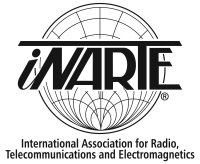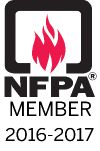Acceptable Voltage Ranges
Voltage Relationships Based on Voltage Ranges in ANSI C84.1-2016
Voltage Ranges
Voltage is divided into two ranges: A and B. Each voltage range is listed for locations: service voltage and utilization voltage. Service voltage is measured at the point of delivery; utilization voltage is measured at the terminals of the utilizing equipment. These are detailed in Table. The difference between service and utilization voltage allows for voltage drop in facility wiring between the point of utility delivery and the utilization equipment. The National Electrical Code (NEC), recommends that voltage drop in branch circuits (sub panel to utilization equipment) be less than three percent. It also recommends that feeder (between main panel and subpanel) voltage drop be less than three percent, with the combined voltage drop of branch plus feeder being less than five percent.
Range A Service Voltage
Electric supply systems shall be so designed and operated that most service voltages will be within the limits specified for Range A. The occurrence of service voltages outside of these limits should be infrequent
Range A Utilization Voltage
User systems shall be so designed and operated that with service voltages within Range A limits, most utilization voltages will be within the limits specified for this range.
Utilization equipment shall be designed and rated to give fully satisfactory performance throughout this range.
Range B Service and Utilization Voltage
Range B includes voltages above and below Range A limits that necessarily result from practical design and operating conditions on supply or user systems, or both. Although such conditions are a part of practical operations, they shall be limited in extent, frequency, and duration. When they occur, corrective measures shall be undertaken within a reasonable time to improve voltages to meet Range A requirements.
Insofar as practicable, utilization equipment shall be designed to give acceptable performance in the extremes of the range of utilization voltages, although not necessarily as good performance as in Range A.
Outside Range B Service and Utilization Voltage
It should be recognized that because of conditions beyond the control of the supplier or user, or both, there will be infrequent and limited periods when sustained voltages outside Range B limits will occur. Utilization equipment may not operate satisfactorily under these conditions, and protective devices may operate to protect the equipment.
When voltages occur outside the limits of Range B, prompt, corrective action shall be taken. The urgency for such action will depend upon many factors, such as the location and nature of the load or circuits involved, and the magnitude and duration of the deviation beyond Range B limits.
Table For Acceptable Industry Standard Nominal Voltage
| Voltage Point of Measurement | Standard Voltages 120 208 240 277 480 600 660 |
Percent Of Nominal Voltage |
| Service Entrance Voltage High Range A | 126 218 252 291 504 630 720 | 105% |
| Service Entrance Voltage Low Range A | 114 197 228 263 456 570 655 | 95% |
| Utilization High Voltage Range A | 126 218 252 291 504 630 720 | 105% |
| Utilization Low Voltage Range A | 108 187 216 249 432 540 630 | 90% |
| Service Entrance Voltage High Range B | 127 220 254 293 508 635 725 | 105.83% |
| Service Entrance Voltage Low Range B | 110 191 220 254 440 550 635 | 91.67% |
| Utilization High Voltage Range B | 127 220 254 293 508 635 725 | 105.8% |
| Utilization Low Voltage Range B | 104 180 208 240 416 520 610 | 86.67 |





